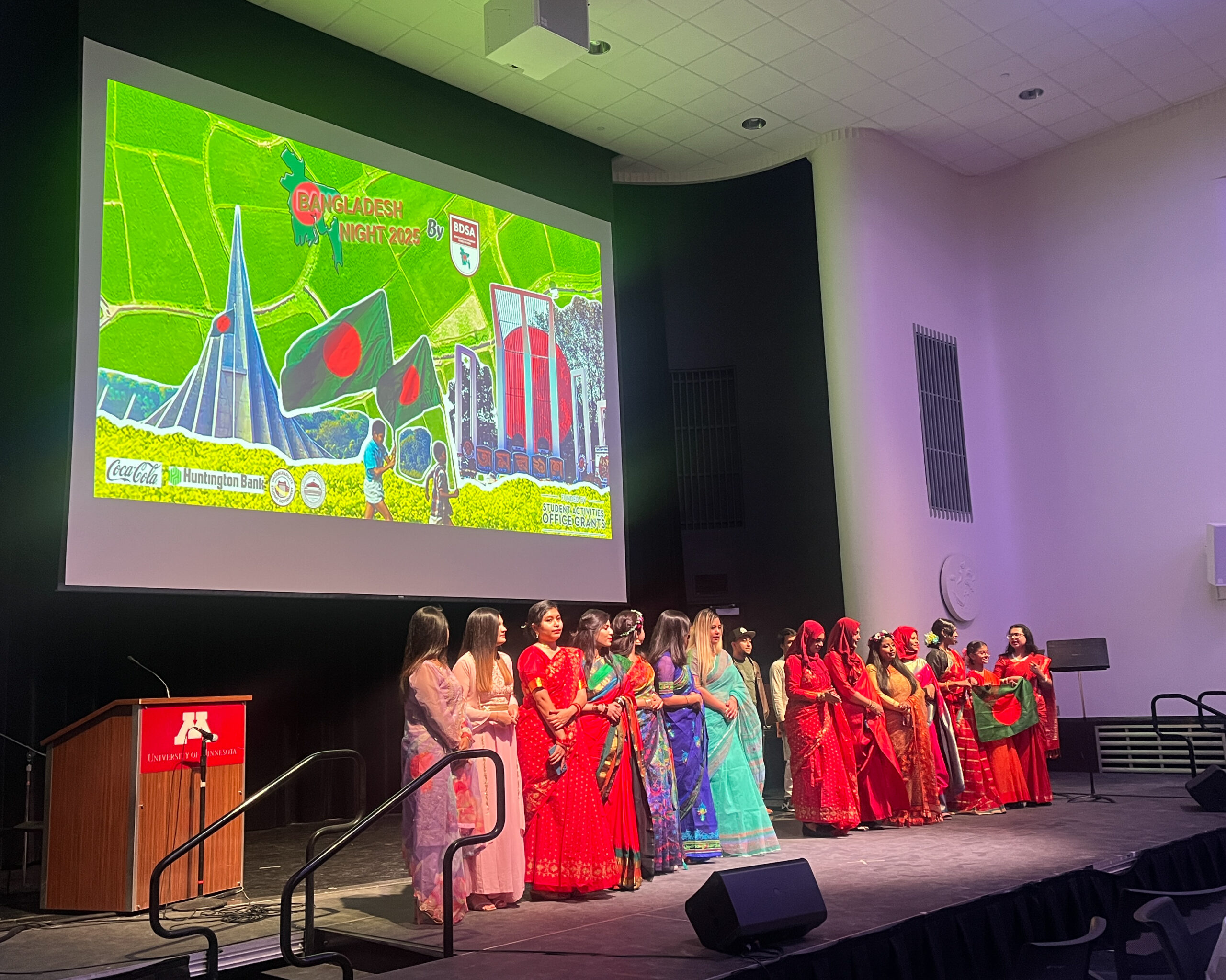The Bangladeshi community is not big on the University of Minnesota campus, but the event created cross-generational connections.
Bangladesh Night 2025 was not packed, but those who attended the annual cultural celebration said they were happy to be there to uplift a little-known community on campus.
Multiple generations of Bangladeshi immigrants and University of Minnesota students gathered in Coffman Union on Feb. 15 for song and dance, henna tattoos and authentic Bangladeshi cuisine catered from Maruf Rashid Catering.
Nafisa Sadaf Prova, the event’s organizer, said the annual event highlights Bangladeshi culture as distinct from neighboring Asian countries, such as India or China, which are more widely understood.
“Very few people know about the difference between Bangladesh, India and South Asian countries,” Prova said. “This is a really great opportunity for us to showcase our traditions.”
University sophomore Sajia Bushra agreed that events like Bangladesh Night are important connectors in the small community.
“There’s a lot of Bengali American kids that probably have never been to Bangladesh before,” Bushra said. “They get a really great opportunity to get to know their people and their roots.”
Arisha Kavi, a freshman student, was doing henna at the event. She said Bangladesh Night was the first time she had spoken Bengali or had authentic Bangladeshi food in weeks. Kavi also spoke with generations of Bangladeshi immigrants.
“Usually I’m meeting people around my age,” Kavi said. “Here I’m interacting with different generations. There’s parents. There’s grandparents.”

At the event, people were walking around blowing on their hands to get their henna to dry as they found places to sit before the show started.
Behind the stage, images were projected on a screen displaying titles of songs sung with colorful backgrounds of fields, people dancing, clouds and the Bangladesh flag. Prova sang a few songs herself.
One of the songs was “Ore Nil Doriya,” a song from the 1978 Bangladeshi film “Sareng Bou.” A significant song in Bangladeshi popular culture, it is about a sailor’s wife dreaming of her husband’s return.
Women in saris also danced to drumming music.
Nabula Bohota, a College of Liberal Arts grant assistant, performed as well and said wearing a traditional sari is one of her favorite things about this event. In a fashion show segment, she walked and showed off a bright purple and pink sari with a glittery floral pattern wrapped around the edges.
“The songs, the dances and the traditional dresses introduce all the Bangladeshi traditions to audience members who are not familiar,” Bohota said.
Raihana Afroz, a third year Ph.D. student, was reminded of Bangladesh in every aspect of this event from the food to the cultural performances.
“We can go back to our country for one night,” Afroz said. “That is important to me.”

